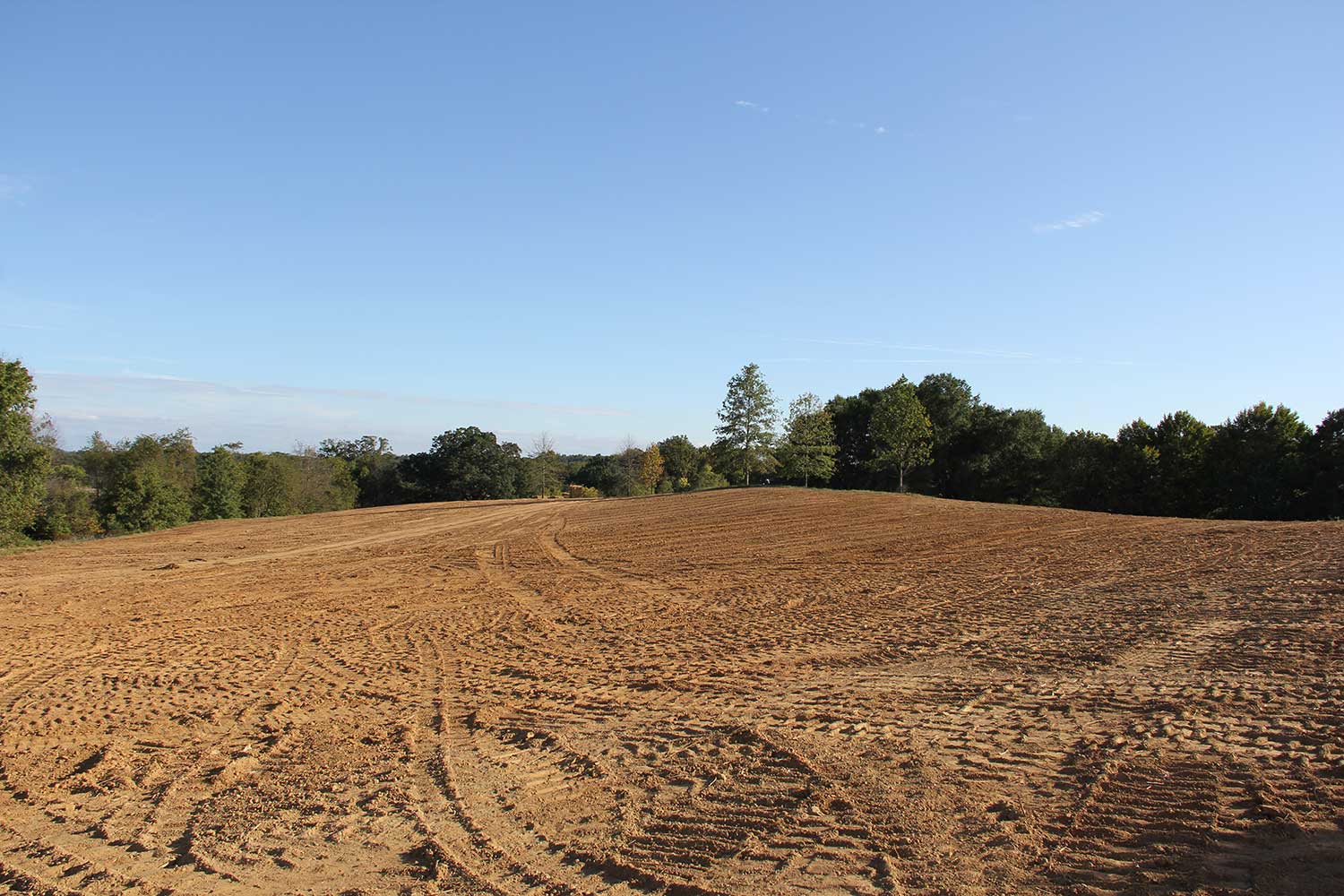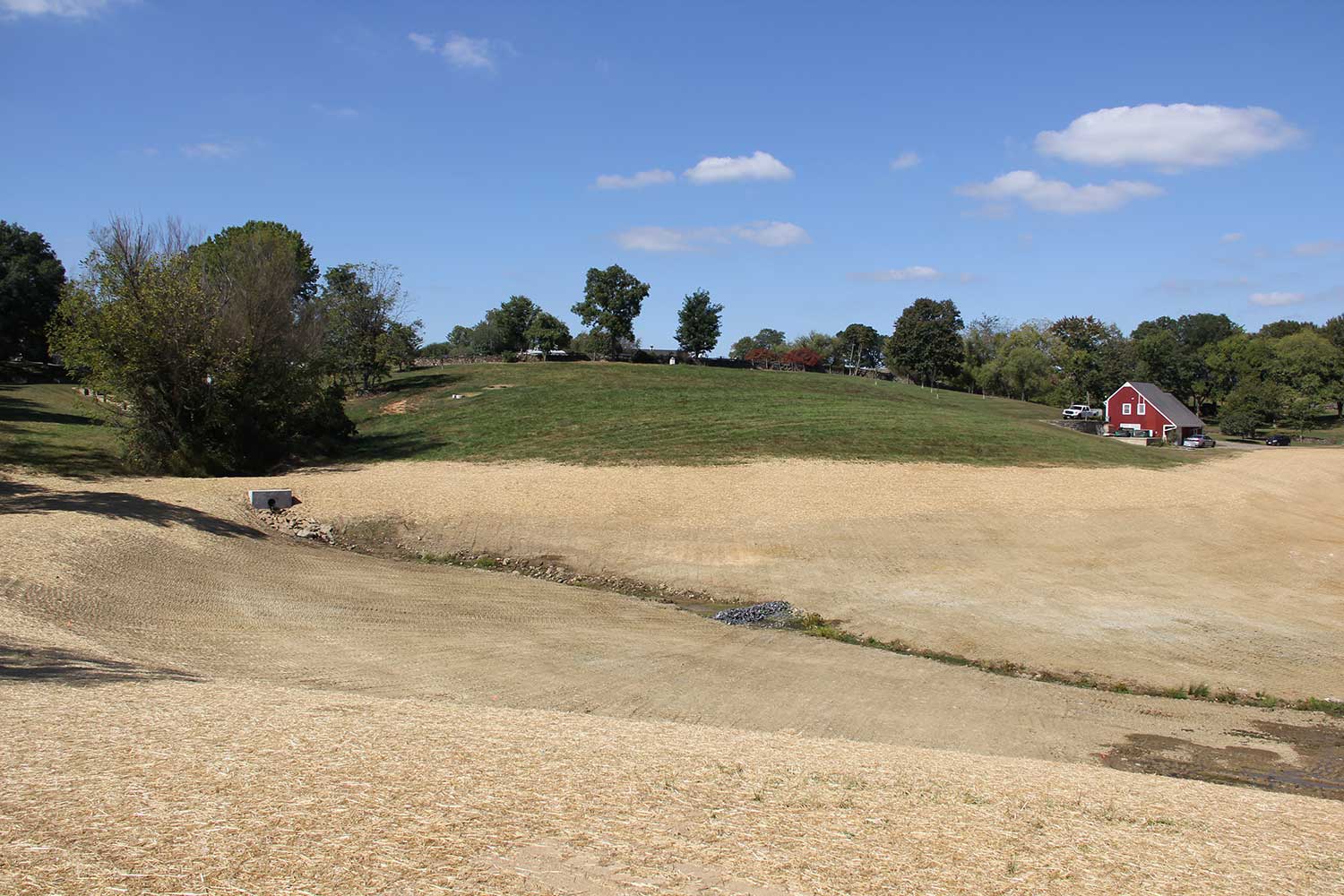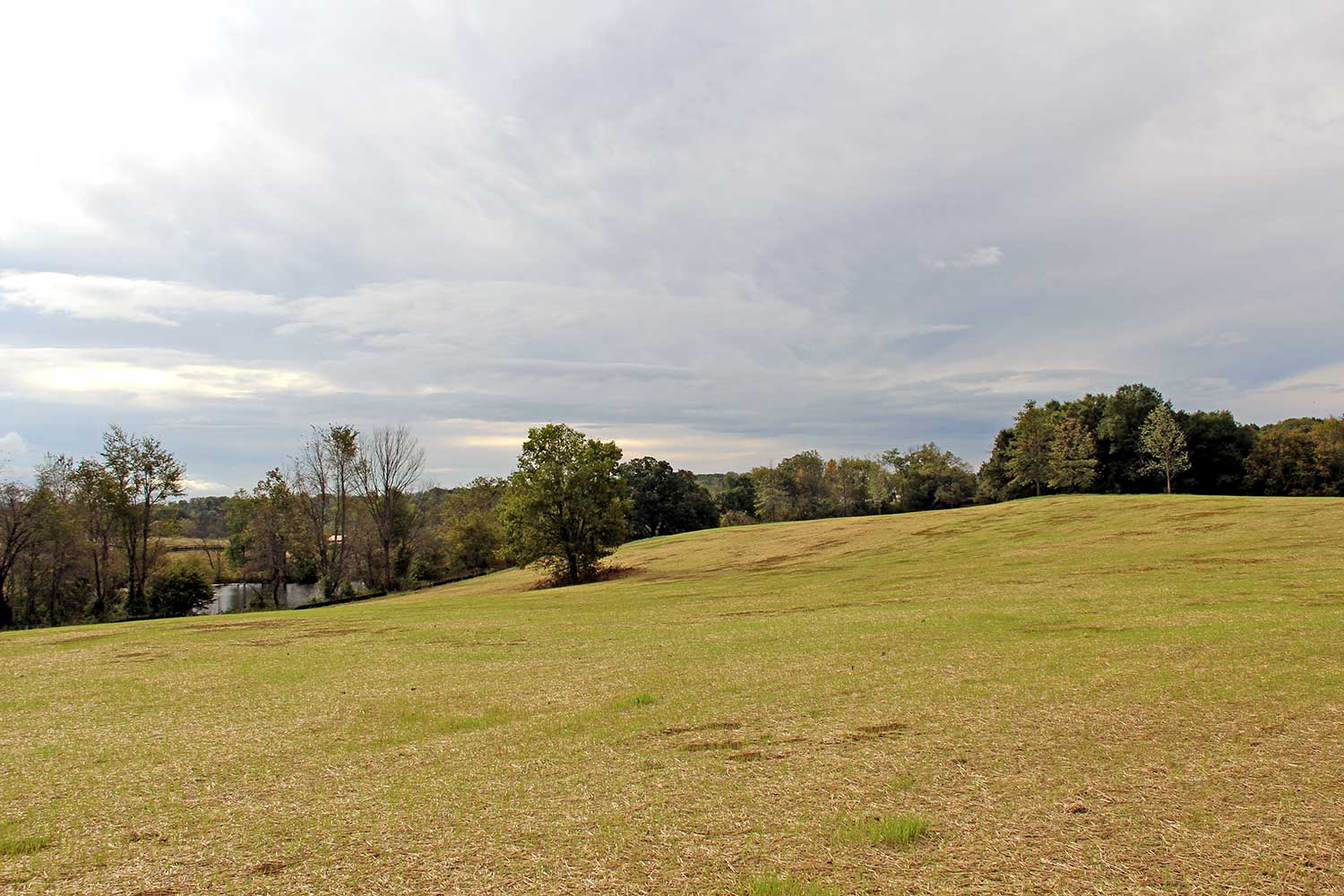A New Old Meadow
OSGF
Nestled between a barn and the main residence, partially hidden by a copse of trees, sits Oak Spring’s wildflower meadow. The meadow doesn’t look like much right now – just a large patch of dirt covered in hay and a few young shoots of winter wheat. But this scene is the first step towards a thriving ecosystem of native grass and wildflowers, a grassland that is quite different from many of the close-cropped horse pastures nearby. As well as supporting plant diversity, this meadow will provide plentiful habitat and food for insects, birds and a variety of other animals.
“Restoration ecology” refers to human efforts to revert an ecological community back to an earlier state, usually replicating the species present before people came along. In some cases, the “people” in question are a specific group – European colonists, for example, or even a developer who built on the land in the past few years. In other cases, restoration ecologists attempt to recreate ecosystems that disappeared thousands of years ago, a process often called “rewilding.” By necessity, restoring natural spaces requires that people make active decisions about what they want to restore something to.
At Oak Spring, instead of recreating a Pleistocene-epoch ecosystem, we’re bringing back native grassland. Before European colonization and the subsequent conversion of much forest land to agriculture, the Northern Virginia Piedmont region was predominately forested, with patches of meadow interspersed throughout the tree cover. These open patches were often the first areas to be converted to agriculture. One difficulty for these open grassland ecosystems is their dependence on “disturbance,” meaning events that cause abrupt and significant change in an ecosystem. Fire and floods are both types of disturbance; in the case of these meadows, they served to clear openings in the forest in which grassy patches could grow. Ultimately, trees would grow back to fill the canopy gap and return that patch of ground to forest, while fires, floods, and other disturbances would create new openings for grasslands elsewhere.
This is the kind of habitat we’re recreating in the wildflower meadow. For many years this patch of land was a field of fescue, perfect for grazing horses. That changed in the summer of 2015, when, in order to restore some of the ponds by the main residence, workers had to dig up most of the field. Now that the pond restoration is complete, there are eight acres of land with the fescue removed–a disturbed landscape that opens up the opportunity for a grassland to grow.
When planting grasslands, there are several types of grass to choose from. Much of the grass we see in horse pastures and lawns, such as fescue, is called a “cool season grass.” Often nonnative to Virginia, these grasses tend to grow most in the spring and fall, but require quite a bit of fertilizer and pesticide, along with regular mowing, to get the look of the manicured lawn or pasture. Grasses native to Oak Spring are the opposite type: warm season grasses, meaning that they do most of their growing in the summer and require a fraction of the water and chemicals that cool-season species need. Our land management team chose short warm season grass species such as Little Bluestem and Sideoats Grama, plants that support wildlife while also being short enough to allow wildflowers to grow in their midst.
Spreading hay over the newly-planted seeds helps to protect them from weather and prevents invasive species from out-competing them as they begin to grow.
Throughout the fall, the team has been working to plant seeds, spread hay, and water the meadow-to-be. The grasses and wildflowers will not come up until the spring, making a winter cover crop necessary to keep other species from invading the meadow. That crop is winter wheat, and the green shoots that are appearing now come from this early plant. The cover crop will not remain in the meadow long; in the spring, before the wheat drops its own seeds and before the native grasses begin to grow, we will mow the meadow. That will minimize competition from wheat and weeds, making sure that the native species have room to flourish.
Planting a meadow is no easy process. Not only did our landscape team have to test, plan, seed, hay, and water over the course of this fall, but they will be monitoring the area to make sure that invasive species don’t move in and compete with the new plantings. It will take between two and three years for the meadow to be fully grown. In the meantime, we’ll be watching the winter wheat and waiting for the first new shoots in spring.






